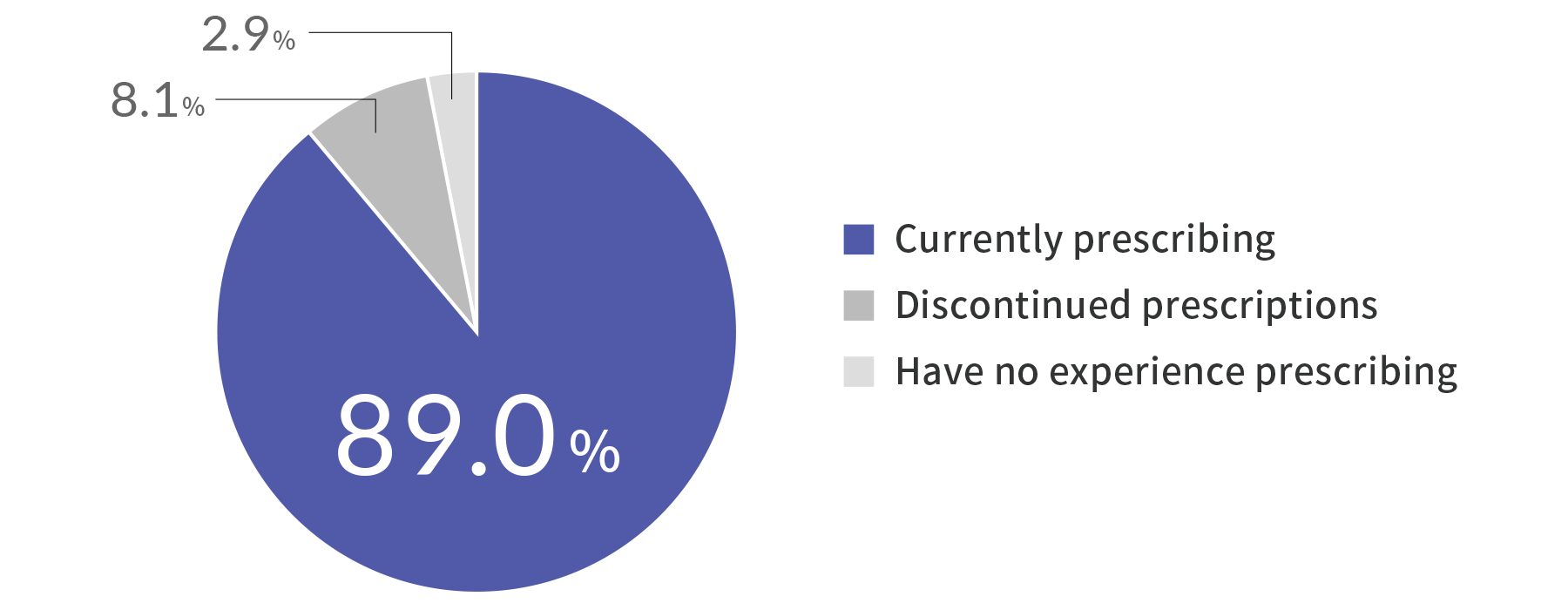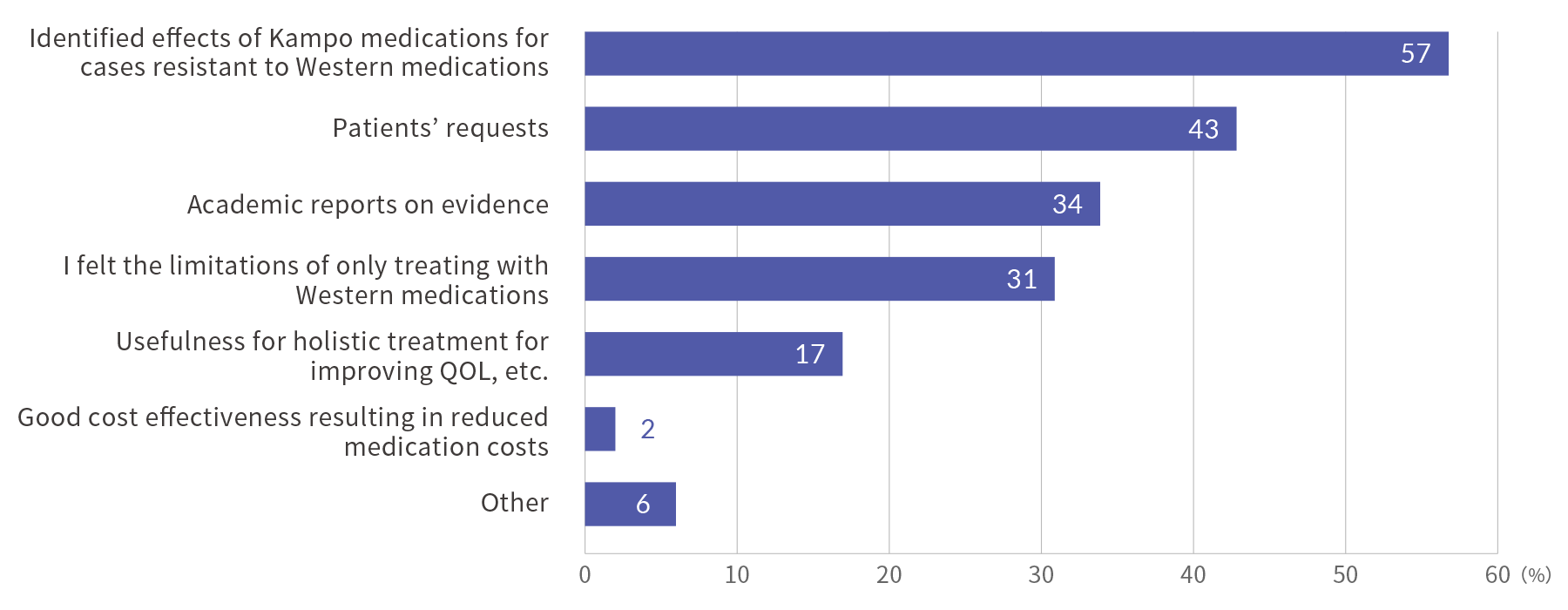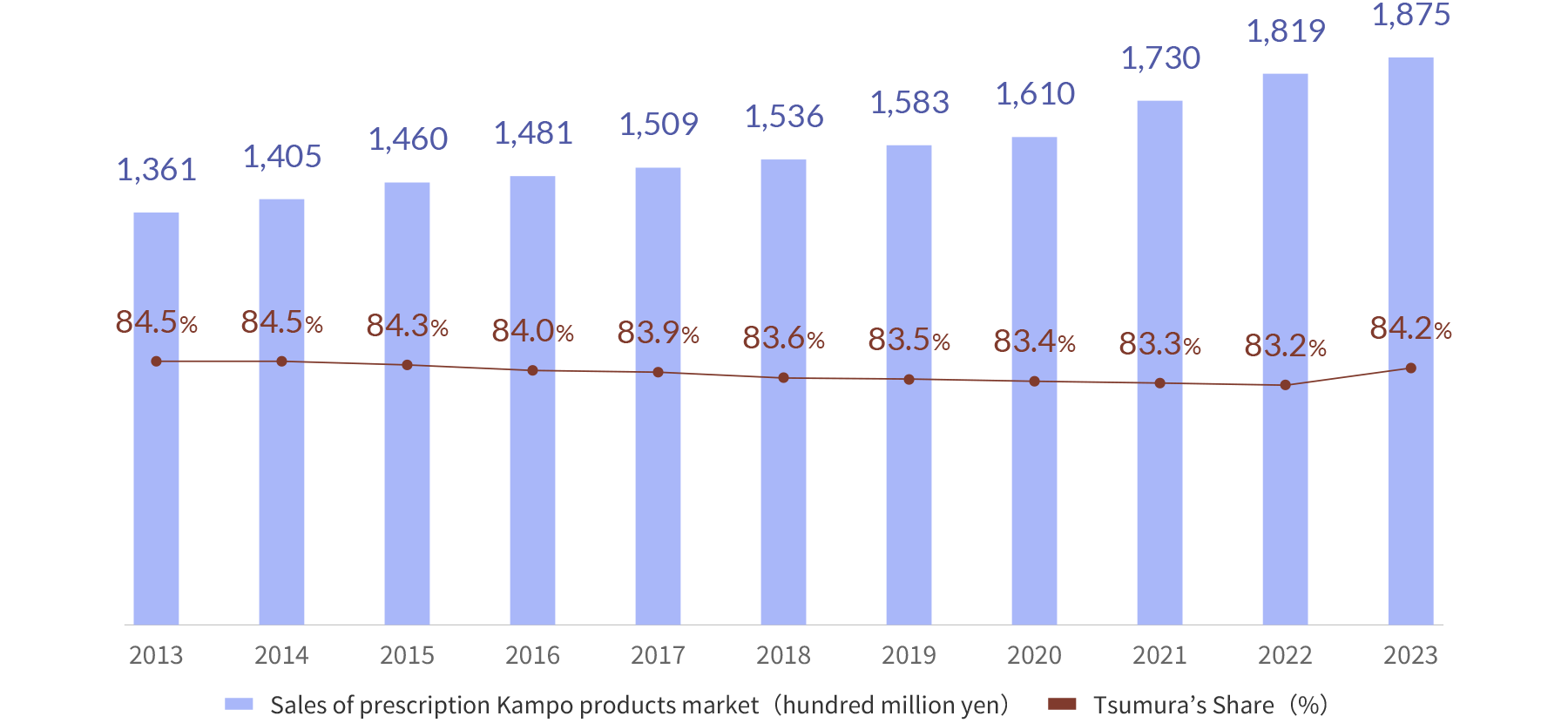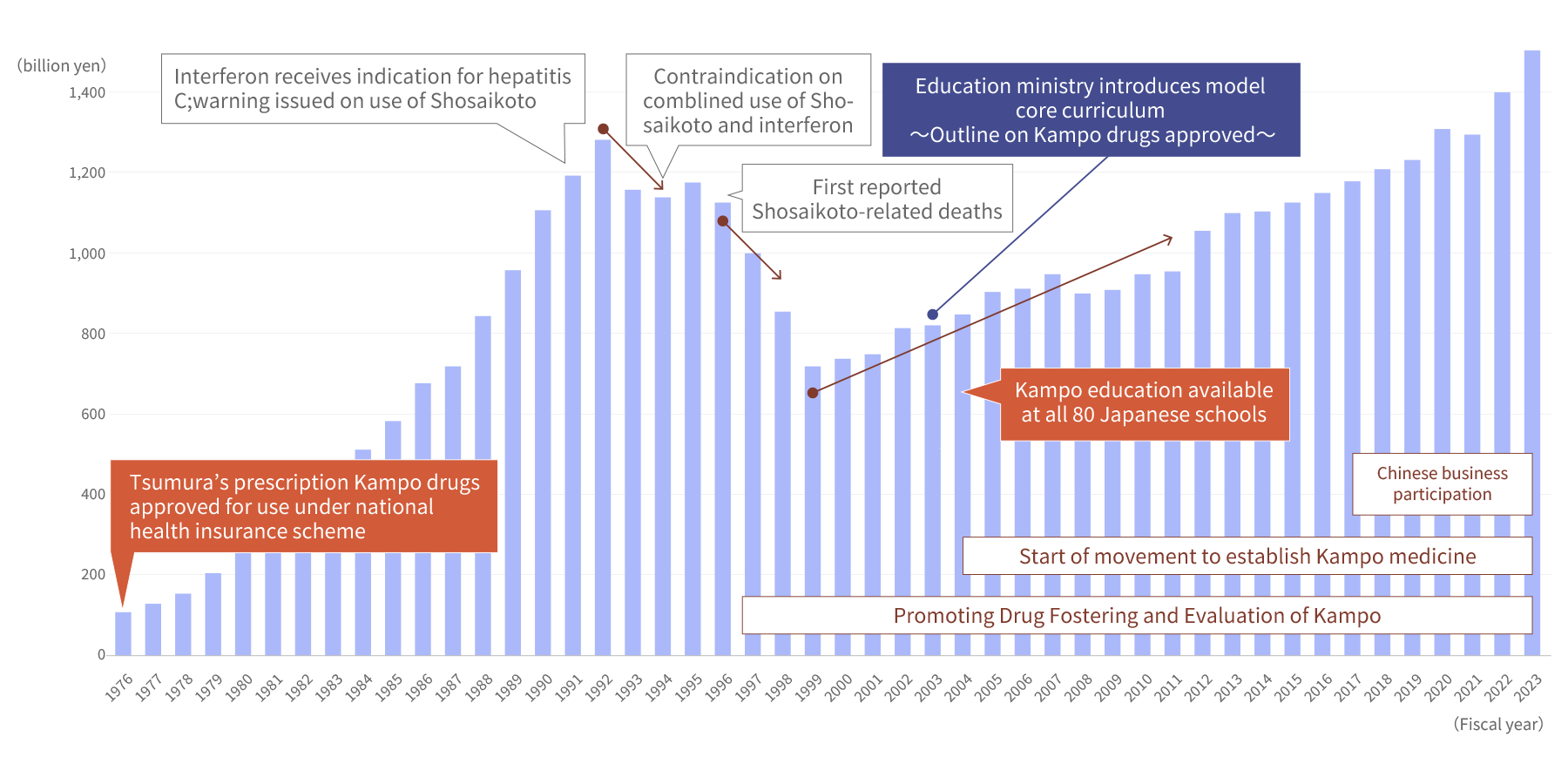Trends Related to Prescription Kampo Products
Situation of physicians prescribing Kampo
Practice of prescribing Kampo

Reasons for prescribing Kampo

- *Source:2011 Survey on the Status of Kampo Prescriptions, published by the Japan Kampo Medicines Manufacturers Association
According to the survey conducted in 2011 by the Japan Kampo Medicines Manufacturers Association, the percentage of physicians using Kampo medicines was 89.0%, 5.5 percentage points higher than the 83.5% reported by the previous survey in 2008. The above data indicate the trend of an increasing rate of physicians prescribing Kampo.
With regard to reasons for prescribing Kampo, the most common response chosen by 57% of the respondents was “Identified effects of Kampo medications for cases resistant to Western medications,” which was followed by “Patients’ requests,” “Academic reports on evidence,” “I felt the limitations of only treating with Western medications,” and “Usefulness for holistic treatment for improving QOL, etc.”
Market trends
| NHI price revision | |||||||||||||||
|---|---|---|---|---|---|---|---|---|---|---|---|---|---|---|---|
| April 2002 |
April 2004 |
April 2006 |
April 2008 |
April 2010 |
April 2012 |
April 2014 |
April 2016 |
April 2018 |
April 2019 |
April 2020 |
April 2021 |
April 2022 |
April 2023 |
April 2024 |
|
| All pharmaceuticals |
-6.3% | -4.2% | -6.7% | -5.2% | -5.75% | -6.0% | -5.64%※1 | -5.57% | -7.48% | -4.35%※1 | -4.38% | private※2 | -6.69% | private※2 | -4.6% |
| TSUMURA KAMPO |
-3.6% | -2.8% | -4.2% | -3.3% | -4.5% | -3.8% | -3%※1 | -3% | -3.1% | -1.8%※1 | -0.4% | 0% | -0.9% | +2.3% | +21.6% |
- ※1Price revision rate excluding consumption tax.
- ※2For mid-year revision of 2 years
Sales of prescription Kampo products, Tsumura's included, in FY2024 amounted to 228.0 billion yen which is 2.0% of total prescription pharmaceutical sales in the NHI Drug Price basis.

| Growth rates in sales base | ||||||||||||
|---|---|---|---|---|---|---|---|---|---|---|---|---|
| FY 2013 |
FY 2014 |
FY 2015 |
FY 2016 |
FY 2017 |
FY 2018 |
FY 2019 |
FY 2020 |
FY 2021 |
FY 2022 |
FY 2023 |
FY 2024 |
|
| Growth rates in sales base (compared to previous years) |
3.2% | 2.4% | 2.3% | 1.9% | 2.4% | 2.7% | 1.8% | 1.1% | 8.1% | 4.6% | 5.9% | 21.9% |
| The number of Kampo preparations (that increased in sales compared to previous year) |
66prescriptions | 81prescriptions | 68prescriptions | 95prescriptions | 63prescriptions | 83prescriptions | 66prescriptions | 82prescriptions | 110prescriptions | 98prescriptions | 94prescriptions | 84prescriptions |
The size of the market for Kampo products (prescription Kampo preparations) reached 228.0 billion yen in fiscal 2024.The market has steadily grown after hitting bottom in 2000.
Tsumura’s share of the prescription Kampo preparation market was 84.6% as of the end of March 2025.
Net sales of the pharmaceuticals business

- The Accounting Standard for Revenue Recognition, etc. has been applied since FY2021 (resulting in year-on-year growth of 11.3%).
Tsumura’s prescription Kampo formulations were added to the National Health Insurance (NHI) drug price list in 1976, for the first time in its history. Then, the market for our products began to grow, particularly driven by a Kampo boom led by safety-conscious consumers and an increasing number of hospitals adopting our Kampo formulations, including Shosaikoto, a medication for treating chronic hepatitis. Net sales of pharmaceuticals peaked in 1991, posting more than 100 billion yen, out of which 30 billion yen was related to Shosaikoto.
After this, however, net sales began to decline, due to factors such as the market launch of Interferon for chronic hepatitis treatment, and a report on side effects caused by Shosaikoto administered for chronic hepatitis. The downward trend accelerated in 1996, when the media reported on serious side effect cases, including fatal ones, shocking news that undermined the established reputation of Kampo medicines for safety.
In response to this situation, the Company revamped its sales strategies. We created strategies aimed at promoting Kampo medicine itself. As a result, after bottoming out in 1999 net sales have been on a recovery track. Sales growth has been rising particularly since FY2004, backed by the launch of a Kampo drug-fostering program based on accumulated evidence.

